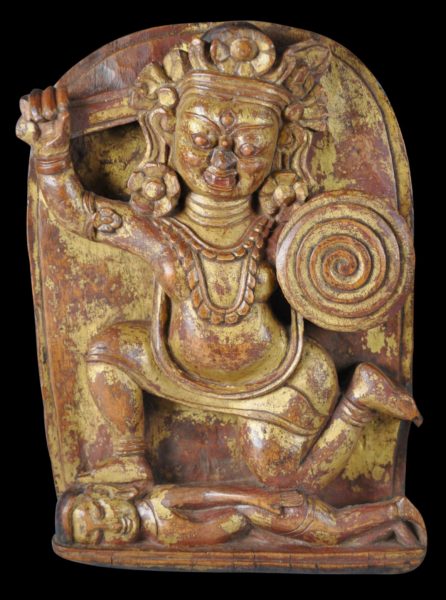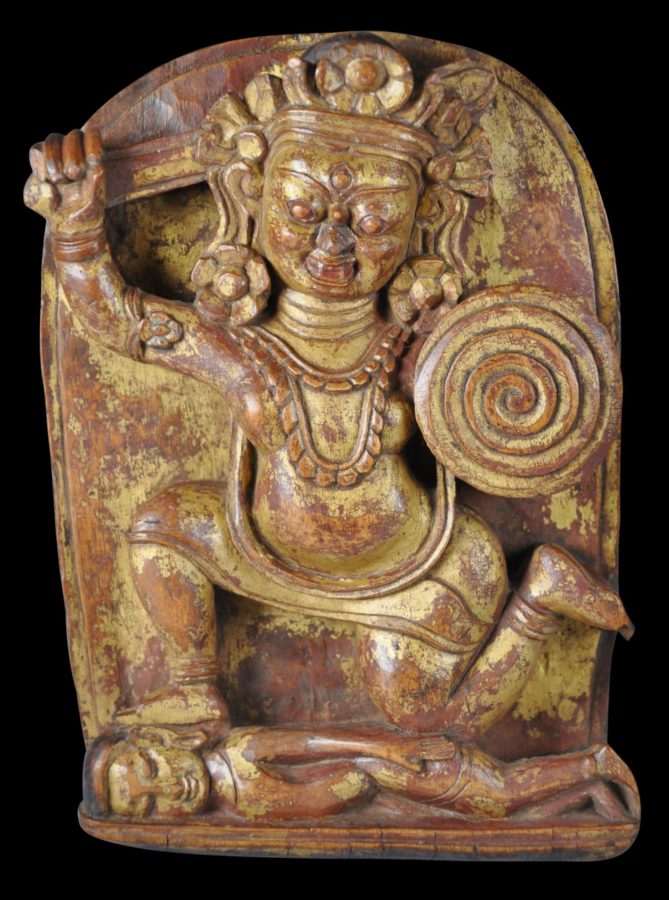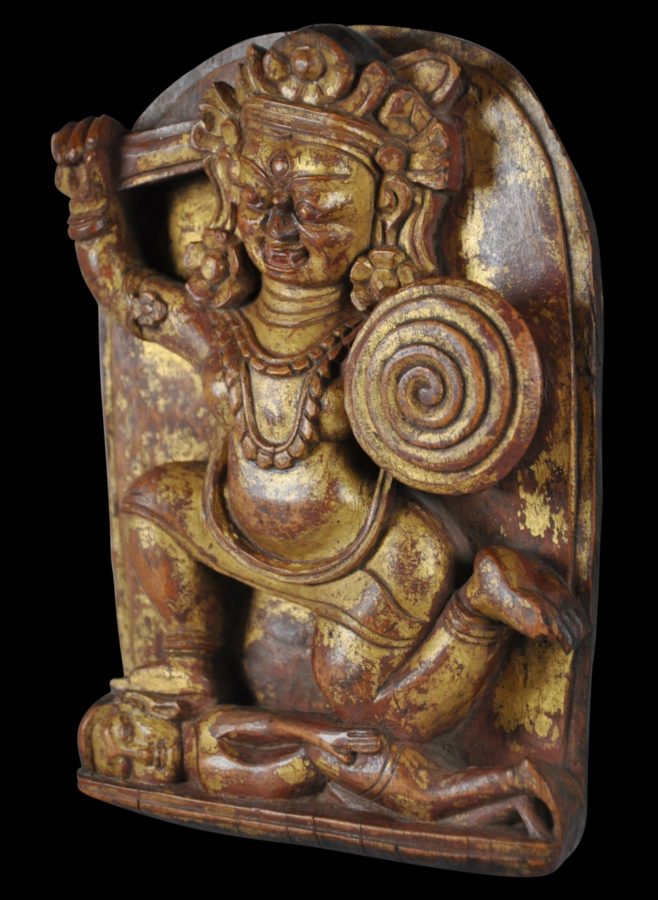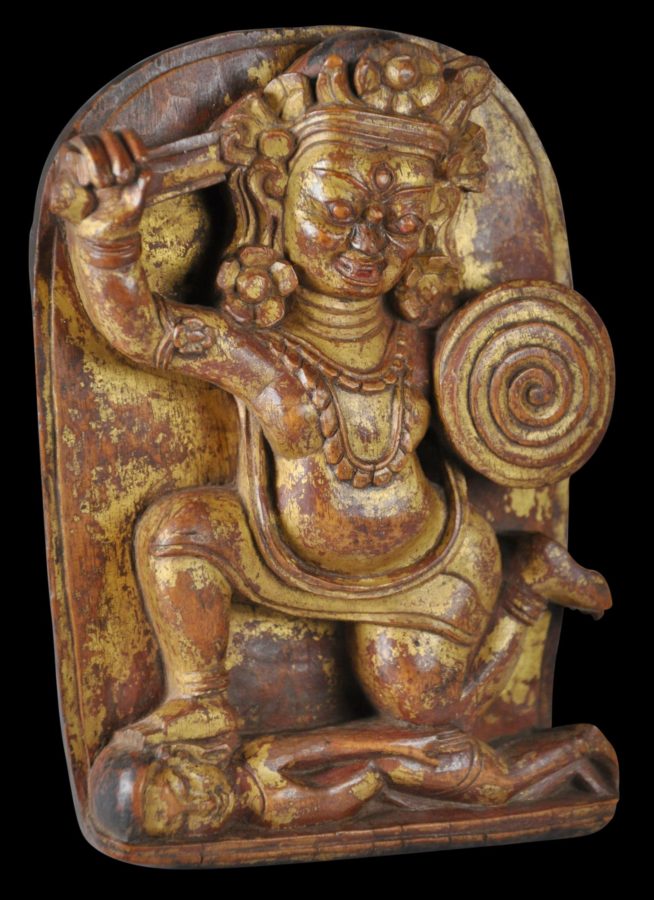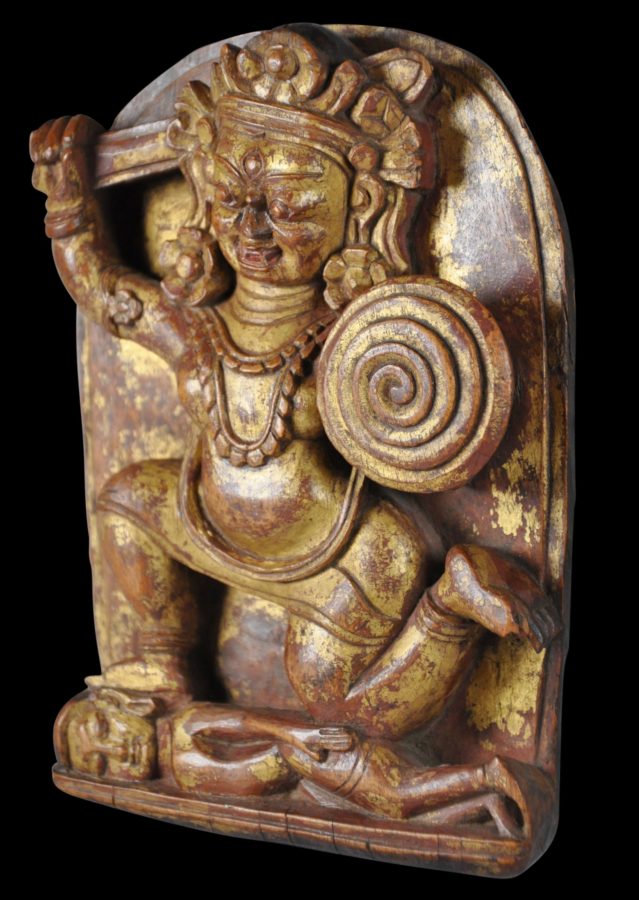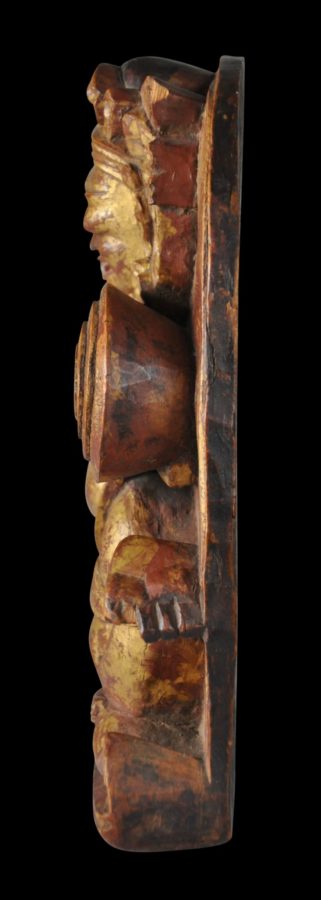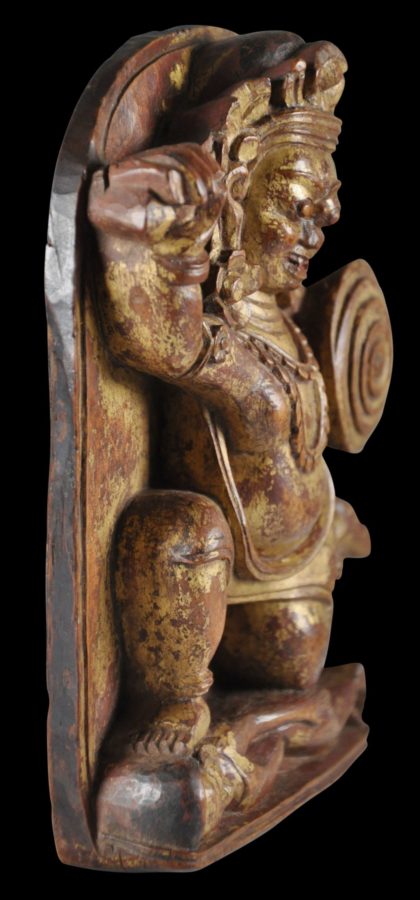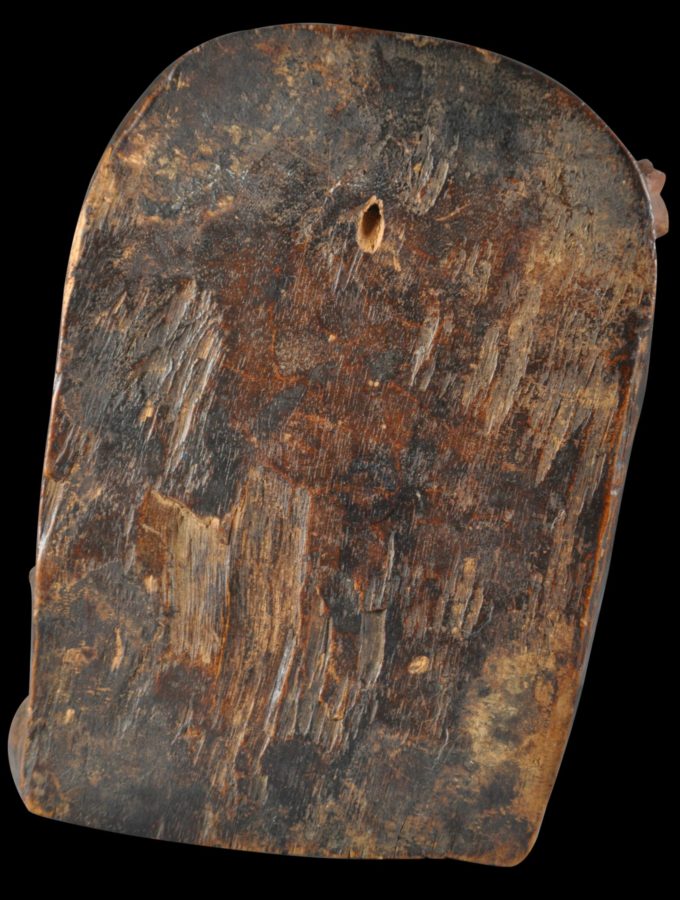This fine image of Achala (sometimes rendered as Acala) is of carved wood that has been gilded (covered with gold leaf).
It shows the deity with his right foot on the head of a figure – possibly the Hindu deity Tsana – and his left knee on the buttocks. He brandishes a sword in his right hand and a coiled shield in his left.
His eyes bulge, the mouth is open and the fangs are bared and biting down on the lower lip. A third eye is on the forehead. He wears necklaces and arm bands, earrings and a crown all decorated with flowers.
Achala’s large face is matched by a prominent belly. Together with the aggressive pose, these features enhance the figure’s monumentality.
The composition with one knee down follows a style that originated in India.
The prominent, swirling shield is both striking, unusual and important – it helps to age the piece. This type of shield is rare and is believed to have first appeared in Tibet in the 14th century. Such shields were made from a sturdy rod of cane that was coiled tightly into a spiral, and then held in place with iron fittings (LaRocca, 2006, p. 93).
Achala, also known as ‘the immovable one’, is a Wrathful Buddha and known as a remover of obstacles. The deity’s depiction in Tibetan Buddhism in this form has survived from at least the thirteenth century.
The image is in fine condition. There are old losses to some of the extremities such as the tip of the sword. The relatively excellent condition of the figure despite its great age can be accounted for the fact that it was likely kept safe bound in textiles in a monastery, possibly for hundreds of years.
References
LaRocca, D.J., Warriors of the Himalayas: Rediscovering the Arms and Armor of Tibet, Metropolitan Museum of Art, 2006.
Linrothe, R., & J. Watt, Demonic Divine: Himalayan Art and Beyond, Rubin Museum or Art/Serindia Publications, 2004.
Weldon, D., & J. Casey Singer, The Sculptural Heritage of Tibet: Buddhist Art in the Nyingjei Lam Collection, Laurence King/Weatherhill, 1999.


